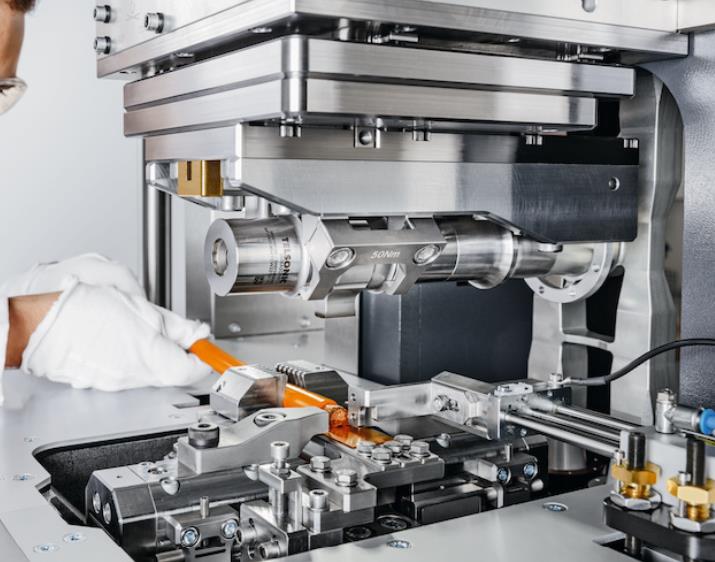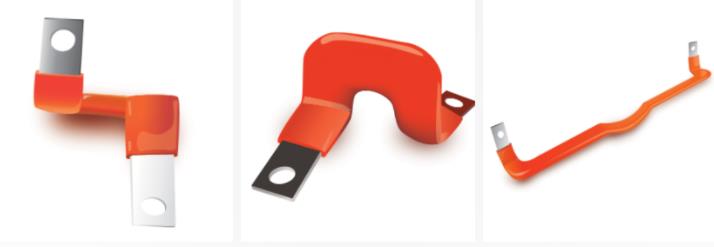Busbar's ultrasonic welding sharing
At present, Busbar and FPC are likely to replace traditional cables. Recently, wiringharnessnews published an online article discussing the basic connection technology of Busbar in current vehicle applications.

Ultrasonic Welding of Automobile Busbar
Although the technology behind electric vehicles (EVs) has been around for some time, sales of EVs and hybrid electric vehicles (HEVs) as personal motor vehicles have increased significantly over the past decade. With the advantages it offers, electric vehicles are seen by many as the future of the automotive industry. As the EV and HEV market grows, manufacturers will look to technological advancements to increase the efficiency, power, and performance of these vehicles, and ultrasonic welding will play a role in these technological advancements.
The automotive wiring harness manufacturing industry has been the largest user of ultrasonic welding since the late 1980s, primarily using the technology for splicing wires. However, the current EV manufacturing landscape is that in an EV, a large number of battery packs are combined in a sealed pack to achieve the required operating voltage and current to power the vehicle's electric motor. Currently, the two main issues in the EV/HEV field are power storage and range. Original equipment manufacturers (OEMs) are addressing these issues in two ways: by making larger batteries for greater range, and by making more powerful batteries for faster charging. Both approaches face challenges. Yes, batteries can get bigger, but they can only reach a certain size before they become too expensive and heavy to be a viable solution.
What is an electrical busbar?
Busbars are flat conductors that are becoming an integral part of the architecture of electric vehicles. Busbars are typically installed in switchgear, panel and busway enclosures for local high current distribution. They are also used to connect the high-voltage equipment of the electrical station and the low-voltage equipment of the battery pack. A bus bar is a metal bar or bar made of copper, brass, or molybdenum that is grounded and conducts electricity. Electrical busbars can be coated with various materials, such as copper, to provide different limits and variations in conductivity. Busbars come in many shapes and sizes, and they will determine the maximum amount of current a conductor can carry before it ages. Today, there are as many as two large busbars in a battery pack, and that number will increase as packs get larger and/or more powerful, while still keeping the space inside them very tight. Ultrasonic welding is the preferred joining process for bus bars in EV applications. However, since these more powerful batteries are only capable of fast charging, we will soon see more innovations in busbars outside of the battery pack, delivering high power from the charging inlet to the battery and on to other high-power motors and devices , increasing the demand for innovative ultrasonic welding applications.

Benefits of using electrical busbars:
Reduced facility costs and faster installation
The ability to easily and quickly add, remove or relocate power supplies without downtime
Future-proof and highly flexible, as some plug-in units can be disconnected and reconnected without power interruption
·No daily maintenance
Expansion or reconstruction is faster and less costly
More environmentally friendly as it typically requires less installation material and the plug-in receptacle is reusable and easy to relocate
The flat conductor takes up less space and is 70% shorter in height
Supports up to 15% more power than cables with the same cross-sectional area
·Lighter weight and packing space, better flexibility. For example, 160 mm² flexible flat aluminum (FF-Al) cables are an innovative alternative solution to 200 mm² round aluminum cables
• Fastening with bolts, the most reliable and less costly process available today. But it adds extra parts (bolts) and requires specific torque values
Efficient heat dissipation - more effective than stranded wire
·Various constructions - copper and aluminum, rigid or flexible, laminated. see picture 1
·Built-in battery without EMC
Facilitate automation, improve safety and quality

Importance of busbar material and size
Busbars are usually made of corrosion resistant copper, brass or aluminum in solid or hollow tubes. The shape and size of the bus bar, whether flat, solid or rod, can dissipate heat more efficiently due to its high surface area to cross-sectional area ratio.
Although copper oxidizes over time, it's still conductive, but that usually means there's more force pushing the current toward the surface. While it won't completely prevent oxidation over time, it will significantly reduce the effects. Coating the busbar surface helps prevent oxidation.
Busbar coatings are typically used for three main purposes:
·Inhibition of corrosion
・Increased conductivity
・For cosmetic purposes
Laminated busbars are used to avoid circulating currents in parallel switching devices in power electronics circuits. Besides its important application in electric vehicles, it also has wide applications in solar and wind energy harvesting and distribution due to its low inductance properties. A more effective and cost-effective method is to use insulating epoxy powder coating. Epoxy coated powders have very high dielectric strength and bond directly to busbar copper, aluminum or silver plating.
Busbars range in size depending on their specific use. The most common commercial and industrial busbar sizes are 40-60 amps, 100 amps, 225 amps, 250 amps, 400 amps, 800 amps.
Busbar sizes currently used in automotive applications are 35, 50 or 90 mm².
Busbars are available in copper and aluminum. The main differences to consider when selecting materials are:
·tensile strength
·Current ampacity resistance
·weight
·cost
Aluminum bus bars are less expensive and work well in high humidity conditions. But aluminum has a smaller current capacity and higher resistivity than copper. Copper has superior thermal characteristics to aluminum.
